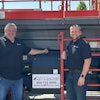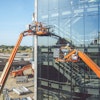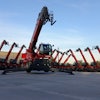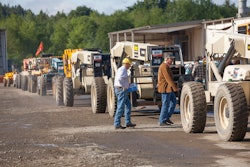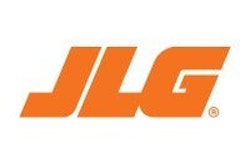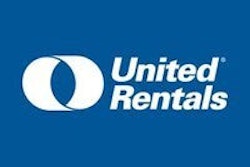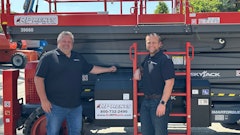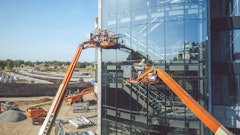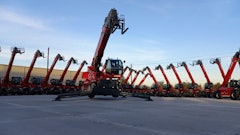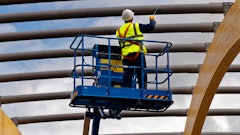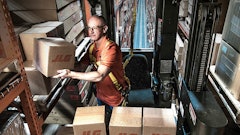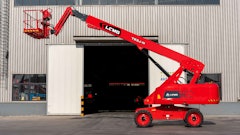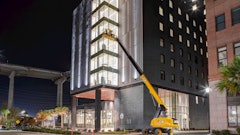
Is your telehandler more than five years old? While there haven't been any drastic changes with recent telehandler introductions, some subtle changes may be enough to warrant purchasing a new machine for your fleet.
Advances in engines
Some of the most noticeable changes with new telehandler models relate to the engine. For example, with side-mounted configurations, you can take advantage of improved serviceability and visibility, indicates David Baxter, director of marketing and market development for JLG Industries for North America, maker of JLG, Gradall, Lull and SkyTrak brands.
"In general, when an engine is mounted on the side, the compartment has a gullwing engine cover so you can more easily access the engine for service and repairs," he explains. "Along with that comes improved visibility. Instead of having the engine right behind the operator, now it's down to the side so the operator can see over the top of it."
Improved visibility can be critical for jobsites where multiple pieces of equipment and numerous workers are all vying for valuable workspace, says Cyndi Johns, director of equipment and parts sourcing, United Rentals. "The ergonomics of how manufacturers are building the cab translates into greater visibility in all directions," she says. "Jobsites can get really busy. In the past, some machines had blind spots. Now, positioning of the engines and booms mean more visibility for the driver."
Other engine-related advances derive from Tier II and upcoming Tier III emissions requirements. Not only do today's telehandlers offer cleaner-burning engines, they are, in some cases, more fuel efficient, as well as higher in horsepower.
Maintenance intervals on many of the newer engines have also been extended. That can be important since maintenance costs can come into play on older machines. Units that are typically older than five years can start costing more in parts, and major components may need replacing.
"Plus, older machines may experience increased downtime due to replacement of wear items and major servicing of the engine or drivetrain," says Beau Anderson, manager, new product development at Genie. "Service requirements such as rebuilding the engine or major drivetrain components can make older machines more expensive to maintain. The key to minimizing this cost is upfront maintenance, including oil and filter changes."
Also be aware that it may not make sense to rebuild some internal components unless you rebuild them all. "You might have good hydraulic components, but it will wear on the other components that you didn't repair," Johns points out.
While an engine that isn't using much oil or water can likely run for an extended period of time, the hydraulic system can be a big-ticket item that you will want to monitor, says Ryan Ford, construction telehandler specialist at Manitou. "Hydraulics are the heart of these machines," he says. "The pump is the biggest factor, but you'll want to consider hoses and cylinders, too."
In the end, it may be maintenance rather than technology that tips the scales in favor of buying a new machine. "Technology may ultimately not be the driving force for upgrading equipment," says Ford. "It may instead come down to maintenance issues. You'll want to consider how much an older machine is costing you and determine if it would be more beneficial to purchase a new one."
Added attachment capabilities
Another advantage you can gain when upgrading to a newer machine is greater attachment capability. "The North American market is really beginning to embrace a more versatile machine for use with buckets and various other attachments in addition to traditional forks," says Ford. "More and more manufacturers are making their newer machines more versatile, especially the compact sizes."
With the increased popularity of attachment capability has come auxiliary hydraulics as standard equipment for attachments that require hydraulic flow, such as brooms, sweepers, augers, etc.
Also look for more advanced hydraulics with greater flow and better control. They may offer the capability for more simultaneous movements, such as lifting, extending and curling, while controlling auxiliary hydraulics.
Get a look inside the cab
Operators of newer models are likely to appreciate recent innovations in cab designs.
"Everyone is getting more sophisticated with cab designs to make them more comfortable and more user friendly," says Baxter. "There has also been some development on control systems, such as electric vs. hydraulic and a move to single or dual joysticks that incorporate function selector buttons."
For example, current Manitou models are moving to a system with two linked joysticks, indicates Ford. One will provide loader controls (boom up/down and curl), while the second will provide construction controls (boom up/down and extend/retract). And instead of having a shuttle lever mounted to the left of the steering wheel, it will be integrated into the joystick control so the left hand never has to leave the steering wheel.
Take the test
The true test for determining when to replace your telehandler is asking yourself if it still meets the demands of the job.
"With every new introduction there seems to be an increase in lift capacity of the machine," says Baxter. "So something that's older may not have the lifting capacity that the newer machines have. At the end of the day, the most important features of any machine is how much capacity does it have and how much capacity does it have at reach."

